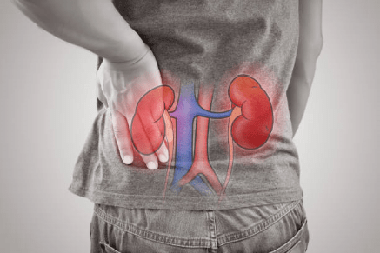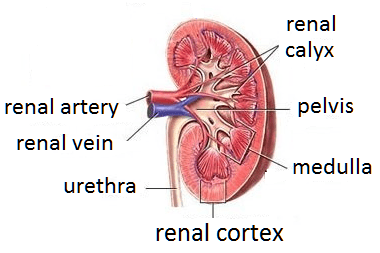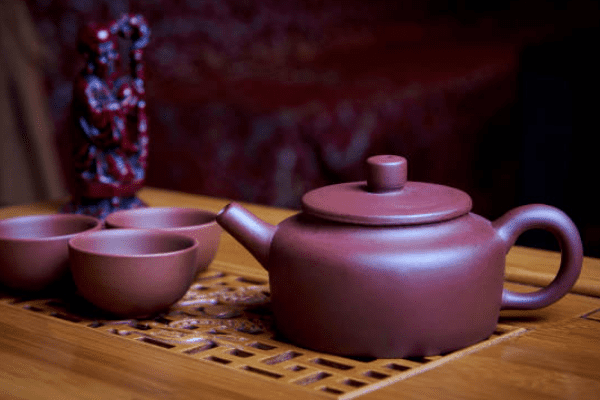Urology >>>> Acute pyelonephritis
Acute pyelonephritis.

Pyelonephritis is an inflammatory process of the parenchyma of the kidney, which develops when infectious agents enter the kidney from nearby organs (through the lymph (for example, the intestines)), with blood flow, by the urogenic route (from urine).
Acute pyelonephritis is primary and secondary. Primary acute pyelonephritis is understood as pyelonephritis as an independently occurring disease that is not associated with other urological diseases or is not a consequence of them.
Acute primary pyelonephritis can be serous or purulent. Acute primary pyelonephritis occurs against the background of a decrease in the body's immune responses and a high virulence of pathogenic microflora. Primary acute serous pyelonephritis is characterized by a bacterial infection with Escherichia coli and / or a viral infection. Sometimes the severe course of primary acute pyelonephritis is caused by strains of staphylococcus that are not sensitive to antibiotics.
The diagnosis of acute primary pyelonephritis is made in the event that it was found that before its onset, the patient had suffered such diseases as acute respiratory viral infection, influenza, tonsillitis, chronic tonsillitis , sinusitis, otitis media, adnexitis, cholecystitis, etc. But if the patient has a history of transferred symptoms of kidney disease or other urological diseases, then the disease acute pyelonephritis is considered as a secondary disease, and the diagnosis will be acute secondary pyelonephritis.
Signs of acute pyelonephritis.
General characteristic symptoms:
- the temperature can rise to 38 in Celsius
- general weakness
- muscle pain
- headache
- decreased appetite

In acute primary pyelonephritis, pain in the kidney area can be noted - aching, moderate intensity, non-radiating, which may occur after a day after infectious intoxication of the body and a rise in temperature.
In acute secondary pyelonephritis, a painful attack (for example, an attack of renal colic ) precedes a rise in temperature, and occurs already against the background of intoxication of the body. This form of pyelonephritis can result from cystitis, acute or chronic urinary retention. Acute secondary pyelonephritis is characterized by a change in the color of urine (takes on the color of beer) or the presence of blood droplets in the urine (with concomitant cystitis).
In the elderly, there is a danger of rapid transition of the serous form of acute pyelonephritis to purulent.
If acute serous pyelonephritis turns into purulent, then the symptoms change:
- The temperature rises above 38 in Celsius
- The general condition worsens
- Chills appear
- Kidney pain gets worse
- Nausea or vomiting occurs
- A feeling of thirst develops, dry mouth
- The urine becomes cloudy
- Decreases skin turgor
- Tachycardia
- Palpation and concussion of the kidney are painful, often the kidney is enlarged
With bilateral lesions with acute purulent pyelonephritis , renal failure may develop.
Acute purulent pyelonephritis can occur in three forms: apostematous (pustular pyelonephritis), kidney carbuncle, subcapsular abscess, which are very difficult to differentiate. Complications: bacteriotoxic shock, renal - hepatic failure, necrosis of the renal papillae, pyonephrosis, paranephritis.
Treatment of acute pyelonephritis is based on conservative treatment:
- antibacterial agents of a wide spectrum of action of the fourth generation and reserve (cephalosporins, fluoroquinols); to clarify the microflora, a bacterial culture of urine is done
- restoration of water and electrolyte balance, intravenous administration of droppers with saline solutions
- on modern methods of intoxication (plasmapheresis, hemosorption, hemodialysis, intravenous laser blood irradiation), immunosuppressive therapy (immunostimulants)
- phytotherapeutic treatment (antiseptic and diuretic)
The main goal of the treatment of acute pyelonephritis is to prevent its transition from serous to purulent form of the course.
The choice of surgical treatment depends on the stage of the inflammatory process and its transition to a purulent form. In this case, catheterization of the kidney or ureter is used. If pustular pyelonephritis, carbuncle, intrarenal abscesses are detected, urgent surgical intervention is required.
Incorrectly treated acute pyelonephritis can take on a chronic form of the course, which is difficult to treat, but it is completely impossible to cure. And this, in turn, will entail many other urological troubles.

Read

Read


























